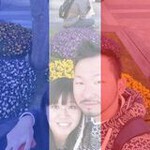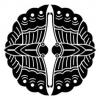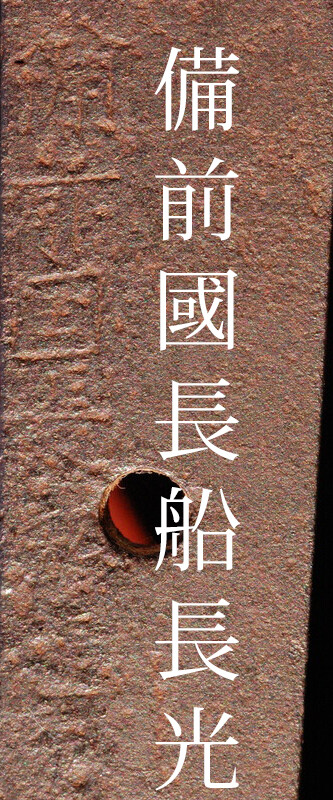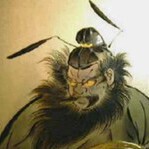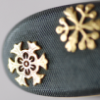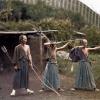Leaderboard
Popular Content
Showing content with the highest reputation on 07/23/2021 in all areas
-
I got out some Ainu knives for a presentation at a local museum and thought there might be some interest in them here. I am not sure these are "Japanese" blades but they ARE related. Indeed, I have formed three collections of Ainu objects, but I've given two of them away and formed this bunch only because they were there. Most of the "blades" are Japanese (or other "Asian') cutlery, but please take a look at the bear face bag that was fitted out with a "netsuke' that we collectors see as a very ordinary iron tsuba. Thank you for looking! Peter8 points
-
Saw something today that reminded me of this old article - originally published in the newsletter of the Northern California Japanese Sword Club - note many of these swords were included in the recent exhibition; Reborn. Fire Osaka Okaji, Edo Okaji 大坂大火, 江戸大鍛冶 Thomas C Helm @San Francisco in California In a land of paper and wood homes fire was a dread scourge from earliest times, there were great fires in the old capitols of Nara and Kyoto. There were many notable fires during the Heian period and one could argue that it was fire that brought an end to that elegant age. It was 1177 the year of Angen when the record storehouse at the imperial palace burned down with nearly all its precious records inside effectively erasing 400 years of culture. This was followed by great fires in 1180, 1182, 1188 and 1208. The centre of power shifted from Kyoto to Kamakura and as before fire continued to follow earthquake and battle all throughout the Kamakura and Ashikaga shogunates. Toward the end of the age of war Oda Nobunaga sealed his hold on fame or infamy with the destruction of the temples on Hieizan in 1571, followed by the immolation of the Ikko in 1574, and the burning of the Honganji in 1580 before he himself died surrounded by flames at the Honnoji in 1582. In the Edo period fire continued to plague the great cities of Japan prompting one observer to note “… and earthquakes and fires are the flowers of Edo.” It’s said there was a fire somewhere in Edo every week and a great fire once every three years. Great fires were those that consumed more than 15 hectares of land. Some notable fires include the following; The great furisode fire of Meireki 明暦 3 (1657). One of the greatest fires to attack Edo and one of the greatest ghost stories ever told as well. Seems a young maiden died an unhappy death by her own hand, her poor family sold off her good kimono. The new owner, though also a young woman died soon after amid strange circumstance. The kimono was sold again and again the innocent who received it was soon dead. When a third girl died and it was seen to be connected to the unlucky garment it was returned to the family. In an attempt to purge the spirit of the suicide a priest was called in, in performing his exorcism he made to destroy the gown. However as he started to burn it something went terribly wrong and the resultant fire destroyed half of the great city with tremendous loss of life. These fires prompted the Bakufu to organize fire brigades, the houses of the Daimyo did the same. As these were made up of samurai they often would do little to aid the ordinary citizens who were threatened with fire and so the neighborhoods organized their own fire brigades; Hikeshi. In Tenna天和 2 nen (1682), a teenaged girl, Oshichi, caught a glimpse of a young acolyte while sheltering from a fire in her local temple. Hoping to see him again she set a fire only to see it burn wildly out of control. The destruction was incredible and her culpability undeniable. Whether she saw her would-be priest ever again is unknown. Genroku 元禄11 nen (1698) brought the great Chudo fire and not long after came the Mito-sama Kaji. So called because this fire started within the Mito lords Edo mansion. Because of the situation of the mansion the resultant fire destroyed nearly every Edo home of the great lords of Japan at the time, more than 300 in all. Meiwa 明和 9 nen brought the Meguro Gyunin-zaka fire followed in Bunka 文化3 nen by another great fire and in 1855 (安政 2) perhaps the last great fire of the Edo period which came amid tremendous political upheaval and was the result of a great earthquake. Of course you may note a gap in my history, this is because the greatest fire in history was probably the great furisode fire of Meireki mentioned above. However as it pertains to the world of the Japanese sword there can be only one great fire and that is the conflagration of Osaka castle in 1615 at the conclusion of the Summer Battle. As I am sure you know Ieyasu had done all that he could to weaken the defenses of what many considered the strongest fortress then in existence in Japan, when he filled in both moats at the end of the Winter Battle. He wooed supporters away from Hideyori and frustrated the plans of his mother, Yodo-dono at every opportunity. He carefully chose his actions so as not to anger the old comrades of Hideyoshi and when the time was right took to the field to destroy the Toyotomi once and for all. With 100,000 troops to garrison her fortress, her own troop of specially outfitted female guards, a years worth of provisions and a horde of gold never before seen in the history of the nation, Yodo may well have felt her position secure within the tower of Osaka. None of it was to last though, in spite of valiant efforts on the part of her army, the Western troops began to make breaches into the castle on the 8th day of the 5th month of the first year of Genna (元和1615) after a siege of nearly a month. Traitorous hearts seeing the tide turning then set fires here and there turning the castle into a furnace. The main donjon still stood though and held, at a signal, when it was clear all was lost, the Osaka troops themselves set fire to the tower. Somewhere inside Hideyori assisted by Mori Katsunaga and Yodo-dono assisted by Ujiie Doki, took their own lives, along with 13 of her ladies and 23 of her generals, their bodies to be consumed in the flames. That of course was not all that was consumed, besides the golden treasures that Hideyoshi had amassed, mighty swords, famed blades from the age of Yoritomo, were also lost. The Kyoho Meibutsu Cho a compilation of the best known works of the era (Kyoho 享保1716-1735) has a section listing 77 famed swords lost to fire, some to the Great Fire of Meireki but most from the collection of the Taiko lost in the razing of Osaka castle. When the damage was all assessed on that long ago day the losses on the Osaka side included some 14, 534 men along with blades by Yoshihiro, Yoshimitsu, Munechika, Sadamune and Masamune and others. Enter Shodai Yasutsugu, who was charged with re-tempering those of these masterpieces that were recovered. His close association with Ieyasu gave him unprecedented access to the finest swords in Japan, including those captured from Osaka. Almost immediately he was producing copies of the famed works of the Soshu school, which were looked on with special favor by Hideyoshi himself. Sato Kanzan tells us “When we say copies (utsushi-mono) it usually has a negative ring, for many it is a polite way to say fake, however this is not the case with Yasutsugu. He always included a bit of his own personality in his copies and his signatures, his soe-mei, always made it clear these were works made with the best of intentions.” Among the works he copied were the following; 海老名古鍛治宗近 - Ebina Kokaji Sanjo Munechika 若江正宗 - Wakae Masamune a tanto so called for the site in Osaka where it was recovered. 獅子貞宗 - Shishi Sadamune, “the lion” by Sadamune of Soshu あたき貞宗 - Ataki Sadamune, also by Sadamune of Soshu 親子貞宗 - Oyako Sadamune, “mother and child Sadamune” (fig.7,8 and 9) 鯰尾吉光 - Namazu-wo Yoshimitsu, the “Catfish tail,” by Toshiro Yoshimitsu (fig.5,6) 一期一振り吉光 - Ichigo Hitofuri Yoshimitsu, his one and only tachi, this translates as “one life one sword.” Also the work of Awataguchi Toshiro Yoshimitsu (fig.1,2) and among those few not lost to fire at Osaka; 松竹貞宗 - Shochiku Sadamune, named for the Plum and Bamboo horimono. (fig.10) 切り刃貞宗 - Kiriha Sadamune, a wakizashi with shinogi close to the ha. 骨食吉光 - Honebami Toshiro, or the “Bone-cruncher,” by Yoshimitsu. (fig.11,12 and 13) Shodai Yasutsugu made many copies of famous works and seems to have taken quiet a bit of inspiration from the early masters, the nidai also made a number of copies but not as many and the sandai made absolutely none if Sato is to be believed Although we do know that the sandai did do the re-temper on the Honebami Yoshimitsu when it was burned in the great Meireki fire. The structure of Osaka castle built by Hideyoshi was burned in 1615 but the battlements remained. The Tokugawa re-dug the moats and rebuilt the donjon and it stood for another two hundred years only to be destroyed in the restoration wars. Of course at that time there was no great loss of life and no treasures other than the castle itself destroyed, as the Choshu samurai that lay siege to it in 1868 gave all occupants the chance to evacuate before razing it whole with purifying, terrible, inexorable, fire. Kaji-ba 火中kachū in the fire 火先hisaki direction in which the flames are spreading 火宅kataku house on fire, world of suffering, the mortal realm 火災kasai conflagration 火事見舞いkaji mimai sympathy visit or gifts after a fire 火事場泥棒 kajibadorobo (火事ドロkajidoro) thief at a fire 火事場kajiba scene of a fire 火除けhiyo(ke) protection against fire 火柱hibashira pillar of flames 火達磨hidaruma mass of flames, or a person engulfed in flame 火足hiashi the speed of a spreading fire 火移りhiusturi catching fire 火勢kasei force of the flames 火炎hono-o or kaen fire and smoke 小火shōka, boya small fire 山火事yamakaji forest fire 天火tenka fire or natural disaster caused by lightning (Tenpi – oven) 引火性inkasei flammability 失火shikka accidental fire 付け火tsukebi arson 防火用水bōka yosui water for putting out fires 近火kinka, chikabi a fire in one’s neighborhood 自火jika a fire starting in one’s own home 拝火教haikakyō fire worship, Zoroastrianism 怪火kaika fire of mysterious origin 飛び火to(bi)hi flying sparks, leaping flames 急火kyūka a sudden fire; a nearby fire 烈火rekka raging fire 舟火事funakaji fire aboard a ship 貰い火mora(i)bi catch fire (from a neighboring burning building) 魚火isa(ri)bi, gyoka fire for luring fish at night 類火ruika a spreading fire, first mentioned in the Taiheiki Fig.1 Ichigo Hitofuri from Kotoku Katana Ezu Fig.2 Ichigo Hitofuri Utsushi Fig.3 Namazu wo Yoshimitsu from Kotoku Katana Ezu Fig.4 Namazuwo Yoshimitsu Utsushi Fig.5 Ebina Kokaji Munechika from Kotoku Katana Ezu Fig. 6 Ebina Kokaji utsushi Fig.7 Oyako Sadamune from Kotoku Katana Ezu Fig.8 Oyako Sadamune Utsushi Fig.9 Oyako Sadamune Utsushi Fig.10 Shochiku Sadamune Utsushi Fig.11 Honebami Toshiro from Kotoku Katana Ezu Fig.12 Honebami Horimono Fig.13 Honebami Utsushi *Yasutsugu images from Yasutsugu Taikan by Sato Kanichi 昭和35 **Oshigata from Kotoku Katana Ezu by Hon’Ami Kotoku 文禄3 (1594) Fire copy 6.pdf4 points
-
Ed, Obviously there was a vogue for these decorative enamel fittings. My first impulsive though was that they were probably popular among the merchant class, and they possibly were. What I have not mentioned so far is the quality of the kojiri on this sword, nor that of the blade. I attach an image of the kojiri that is of silver, only partially inlaid into the lacquer so that it is in relief. Applying lacquer into the spaces between the stalks and leaves and then polishing it must have been a nightmare job. Ian Bottomley3 points
-
Dale i bought this wreckage 2019. After 2 years of care it look like this. The tsuba has no worth or any collecting value but i like it and have this old warrior often in hands. Good luck with yours. I do nothing special. Only cleaning with warm water and soap. Drying and oiling every day with a natural cotton towel. The patination came back. Some kind of self healing of the metal3 points
-
Chris, Thanks for your interest. Indeed, these are "primitives". Most are utilitarian Japanese blades - carpenters knives and things like that were fitted out by local carvers up in Hokkaido. There are basically three (3!) types of blades. 1) belt knives - called MAKIRI - that every guy carried I bet. They have trade knive blades and were certainly tools, not weapons. Then there were "Wood knives" which were like machete for use in forestry. Some of those look like they may have laminated blades but they do NOT look like either Nippon-to or Japanese folk tools. Then there were "Swords" - these included either locally produced hirazukuri short swords (no hamon but locally produced engravings etc} OR recycled Japanese sword blades --- all of which look like tired and abused old beat up Nippon-to -- mounted in locally produced , carved wooded, mounts. Clearly, Japan was awash in old sword blades and many of them seem to have traveled up to the "primitive" communities in the north. I have seen "Ezo" fittings - IN BOOKS!.They are rare!. The pieces that are actually out there to be discovered are universally beat up old Japanese blades or no collectible value - except as "ethnographic art. It seems that folks up in Hokkaido - call'em Ainu - did make iron blades by the Edo period, but most of which there is to be discovered are late 19th to early 20th century tools build of Japanese hardware. Again, thanks for looking! Peter3 points
-
3 points
-
Item No. 83 - Tsuba in Shakudo 7.60cm x 7.11cm x 0.59 cm at centre , 0.38 cm on rim Repeating punched pattern on heavy shakudo plate , signed Goto Koju. Good quality workmanship , as you would expect from this school , with all punchmarks in nigh-on perfect alignment. Bought direct from Japan , 10 years ago.3 points
-
Georg, thank you for sharing your journey with us. Similarly to you, we are enjoying the ride and look forward to the end destination. Please do not get discouraged by a few detractions and distractions on the way there.3 points
-
@Tom Darling, please forgive me in advance if this reply sounds rude for myself not being a native speaker of the English language, but your participations in this thread were sometimes very weird and not very helpful for myself. In post #50 you claimed "The habaki ( -0) is original to the nakago, but not the blade. The three (hi) beyond the machi is also a clue"; to my various inquiries what you supposed to tell me and how a habaki can be original to the nakago but not to the blade and which clue the three hi are for you never gave a reply and left others also wondering what you mean. You later then had suspicion it wouldn't make Juyo since it wasn't directly moved to Juyo but instead Tokubetsu Hozon first. Such assumptions make beginners, as I am, uncertain and require me to check back with more knowledgeable persons, such as Markus, who then assured me your thoughts are wrong and everything is alright with my blade and it does the process as it is supposed to be. Subsequently I had requested better pictures of my blade to have something to share with persons that have helped and assisted me with their thoughts and I was eagerly waiting to get them myself, to finally see something more on the blade. You might be correct in that the pictures as uploaded to the forum are not perfect to make judgements on it - I am surely not the one to be able to tell if this picture is perfect or not. But first of all remember that the forum automatically resizes to pictures of maximum 1800 px width/length, plus during this process which also optimizes pictures filesize-wise as well, hence details may be lost. Next, have I had additional pictures, I would had posted them among too. So no, I don't have a full size blade picture of the other side. I'm keeping this forum updated and sharing what I can since many were very helpful and I love the idea of forums especially when it comes to sharing details and items with persons from all over the world for all to give them access to something they might not have and possibly learn from. Finally, no my blade is not the only one known in this style and shape. Darcy on the first page posted one in exact identical style/shape even with also three hi from Juyo 18. You have participated in this thread with several posts, hence you should be aware of this. Now, I don't want you to answer what you meant with the habaki/nakago post nor discuss again the way to Juyo, but mentioned these two things to maybe give you an outside view on how your postings can be understood/misunderstood by others, especially not knowledgeable persons. Therefore (and also because this way I can at least work around the picture size limitation) find attached a cutout picture of the kissaki area that you had particularily asked upon. To my personal astonishment when comparing the kissaki area with a picture that resulted in cleaning the blade (the particular second picture was posted in this thread on page 3 in post #76) it seems they match pretty well, hamon-wise. @vajo thanks for the hint, I missed to address this earlier. I trust the handling person they will give a freshly polished blade proper treatment though so I don't think as a novice I should tell them how to correctly oil and store the blade. It might also just be a few wooden fibers that were in the way when the pictures were taken.3 points
-
A friend of mine with an extensive collection of militaria, much of it WWI and WWII, has passed away. I agreed to help the family identify and find homes for his collection, that they didn't even know existed. For years I've been helping him sell sabers, bayonets, uniforms, etc. I have photos of two swords that appear traditional, though I doubt either are significantly valuable. I'll post one at a time so there's time for clear discussion. I also have several for the military forum, both forged and stamped. This tachi appears to be relatively recent, and the shinogi ji appears to my eye to have been buffed.2 points
-
2 points
-
2 points
-
Good for you Chris - maybe we are archaeological collectors? Even worn out pieces can be worthwhile they tell a story and at least you can figure out what happens if you neglect maintenance! I think you are on to something with the cotton towel, guards do come up better after a good going over with cotton. Anyone know if cotton was a fabric available in Edo times? I find silk does not give as good results. John J. - I am not sure I will have a few decades - let alone trousers - would continence pants work? Heck just buying it could be a symptom of dementia setting in! But I would rather buy a rust bucket than a shiny new fake.2 points
-
2 points
-
2 points
-
Aoi did another diabolical job on the description. This time, the transcription of the sayagaki in Japanese is ridiculous, and the English translation is no better. To summarize, Tanobe-sensei's sayagaki states that while most old sources name Tōchika as the son of Tsunetō (placing him at the tail end of the Heian period), this sword has the traits of a mid-Kamakura sword.2 points
-
KANENORI, MIYAMOTO AKA: SUGUWARA KANENORI TEISHITSU GIGEI IN (Imperial Household Artisan) MEI: TEISHITSU GIGEIIN SUGUWARA KANENORI HACHI JU YON Ō SAKU DATE: TAISHO GAN NEN HACHI GATSU KICHI JITSU NAGASA: 75.565 cm (29.75″) OVERALL: 95.567 cm (37.625″) For more photos and information: https://yakiba.com/kanenori-miyamoto/2 points
-
2 points
-
So happy and excited to get new collection. Guess waht is this...... just for funny. which period, which kuni,and which school.1 point
-
So far it has been both confusing and challenging! I will hold on to this one for sentimental purposes- and will continue my hunt for others! Thank you Bob1 point
-
Hello Gary, From the one photo I really cannot tell. Can you post a photo of the backside of the menuki?1 point
-
I'm on a topic here which seems not to enjoy much interest from nihonto enthusiasts. But let me tell of one more (to me) interesting discovery related to Japanese swords. The Spanish galleon San Diego succumbed during a sea battle and sank near Manila in 1600. Various artifacts recovered included about 30 Japanese sword parts. See the pic I am posting. So nihonto swords were being taken away from Japan since very early days. Johan1 point
-
i seem to remember reading something some years back that was a discussion of the origin of sword smithing in Japan in connection with the Ainu. I can't quote a source, but I seem to recall that some early big names were theorized as being of Ainu descent. Anyone remember something like this? Thanks for sharing, Peter1 point
-
1 point
-
Ed, the only reference to these early Mei, comes from Chris Bowen. I have received info from Chris saying that, his info on this comes from Token Shibata May, Showa 53 edition of Token Shibata's monthly catalog, "REI", There is an article from Okimasa's Polisher talking about his early signatures. There aren't any other documents concerning this. Token Shibata's catalogue is basically just a sales catalogue , including some relevant info on smiths. Chris, also commented that this claim was confirmed with Okimasa's nephew. To me ( also by definition) , this is hearsay. The are absolutely no other references available to confirm these claims. This reference in Token Shibata being the only one, now may not be contested. However, one must consider, why there has never been another reference?1 point
-
For the mei, the early inscriptions are Oite Kishū Yasuhiro, or Kii-no-kuni Yasuhiro, and sometimes including the prefix "Tōichi" (Kii-no-kuni Tōichi Yasuhiro).1 point
-
Finally, my book came out on Amazon this morning. Amazon only sell softcover book (this is what I was told?) and Ebook. Hardcover books are sold by publishing company I used, "Alpha Book Publisher" and other few book stores. But Hardcover books are not ready yet, maybe in 10days or so. The Publisher said books are sold on European Amazon also. Anybody in Europe, please let me know if you see it on European Amazon. Or, European Amazon and U.S. Amazon is the same, I am not sure. Japan Amazon is separate. Thank you very much for all your encouragement and support. Yurie1 point
-
Yes, but, we're literally talking two hoarder houses, basement to attic. Deactivated machine guns we hope have stamps--my daughter and I are going to dig them out, strip them down, and my firearms attorney is doing the favor of making ATF queries, so if the receivers have to be cut, the parts kits are available, and hopefully they can be Form 5ed and restored. That includes a Japanese Type 99. Can't find the magazine for the G43 or the loading tool for the Luger drum. I already have the G41. There were trade magazines, tactical treatises in German and Japanese, postcards. He hosted the local anime club and there's literally several THOUSAND home-recorded tapes that will mostly have to be dumped. DVDs. Folders of papers. 95% is junk, but the other 5% is historically important. He had a kyu gunto I previously asked about when he was alive, and we found two more in the basement with all these others. My time is limited due to deadlines, though my wife will let me use what time I do have to help them. Neither his sister nor niece are fully abled, so I'll be doing all the climbing and digging. But my display at the next gun and knife show is going to be AMAZING on their behalf.1 point
-
1 point
-
1 point
-
17th century publications, from which considerable portion of this detailed genealogical information is derived, for some reason are quite inaccurate when it comes to 10th, 11th, 12th, and sometimes even 13th century. Nobody knows why. Its one of the great mysteries of this world. I mean if it says the smith was active 1173-1196, you would expect him to wait for the first day of 1173, pick up his tools, and then as any decent person would - put them away in 1196, making sure his name not to be used as signature ever since. But there is a crazy theory out there, which I personally don't believe in. It might be they did not read Meikan.1 point
-
Understanding this... Tokuju papers usually have a period listed right in the setsumei, unlike Juyo. On this one it is very clearly set to middle Kamakura. Their mentioning of Heian is a transcription error or a copy and paste error or two different clerks writing it up. It happens a lot there so you need to be careful. With Ko-Bizen it is kind of a simple error to conflate them with Heian blades, because in the Heian period we classify most things as Ko-Bizen in Bizen. But it needs to be understood as kind of an umbrella under which we place the older Bizen works when we can't clearly define a group to assign them to. So in the Kamakura period if you are an "unaligned" swordsmith that we can't place where you belong, you will fall into the Ko-Bizen classification. In terms of Tochika there may be many generations or just one, there is not enough information to tell and different theories are out there. In these cases the NBTHK can and likes to write about specific pieces, in this case saying that this is a middle Kamakura Tochika while mentioning a theory that he was a son of Masatsune (there are several ways to interpret Masatsune as well in terms of generations and time period). Other times they have mentioned Tsuneto and they have also mentioned that there is a possibility that he is Hatakeda or early Hatakeda somehow. So you kind of can't go wrong by just saying that this one in particular is middle Kamakura and it is certainly authentic and high quality Tochika. But it's really wrong to just pop open Fujishiro and see there is one entry for Tochika and he puts him at the end of Heian so saying that because this is Tochika then it's Heian period. Even the strongest things we can say about dates when we get to middle Kamakura and earlier has to have a big fudge factor of decades to centuries because we literally move back from clearly documented history to poorly documented history to the time of legendary smiths. A lot of that gray area can be dealt with by saying Ko-Bizen or Ko-Kyo and then leaving it as a subject for further research. This it not purely a punt but just the knowledge that swords are still being discovered that can tell us more about what we want to know from the earliest times.1 point
-
I agree with Matt and Ray that the second kanji of the mei looks like Iye, but the references that are easily found don't list such a person. On the other hand, if it is Mune, as Steve has suggested, there are several men it could be. As the you can see, Seth, this is a sport with lots of intellectual challenges and a good bit of fun. I agree with Grey and others that it is unlikely that this sword is worth a polish, but it is most likely worth $150 and you can get your money back, plus extra, on ebay when it comes time to upgrade your nascent collection. As to the maker, whether it is Iye or Mune, it is written in an iconic way, meaning that if you were to search for Sukemune in the books that have Bizen oshigata, his mei would stand out among the others. Enjoy!1 point
-
I thought they were put together with ‘ rice glue ‘ that I thought was made from no other than rice. I think that I even watched a video of how to make it. I am sure someone else will set this straight. Good luck MikeR1 point
-
That's not even a real Ka-Bar. To be fair, it may have been made in Japan in the 1970s when their productivity was less regarded.1 point
-
FYI, there is a similar katana on sale for 2,480,000 JPY, which was made one month earlier by Kurihara Hikosaburo and tempered by Prime minister Saito Makoto. The katana has Tokubetsu Hozon of NBTHK. Ref. 内閣総理大臣斎藤実所持刀超豪壮『下野住人彦三郎昭秀造之』特別保存刀剣保存会鑑定書 (kusanaginosya.com)1 point
-
Kurihara Hikosaburo Akihide kitae kore Showa 8 (1934) October 栗原彦三郎昭秀鍛之 昭和八年十月日 tempered for Prime minister Saito Makoto 内閣総理大臣齋藤實 焠之 Looks to be a potentially historically significant blade Any more pics of blade up close?1 point
-
Well it's a very confusing hobby to have lol My connoisseurs guide looks like it's 100 years old and the pages are brown from so much page turning. And still I am at a loss in many cases. But the reward comes from learning what to look for and before we know it we're fairly knowledgeable in regards to basic kantei All the headaches are worth it lol1 point
-
1 point
-
Bizen Kuni Osafune (maybe) can’t make it out At all beyond that.1 point
-
0 points
-
Dale A lovely daisho from the Tenpo/Saotome school. One of my favorite schools. Great find. Now the question is - how to get them from Tas. to VA.? Rich0 points













